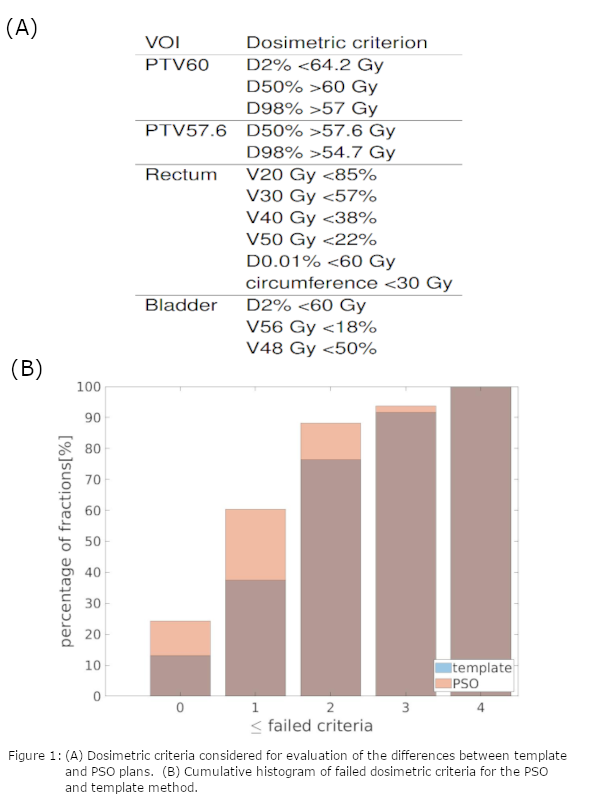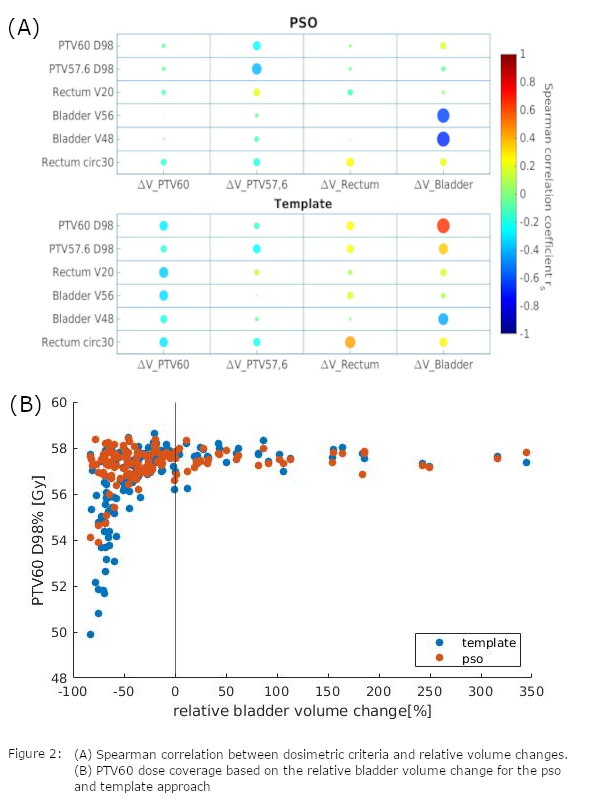Comparison of total replanning and fast template-based planning for online adaptive radiotherapy
Benjamin Tengler,
Germany
PO-1918
Abstract
Comparison of total replanning and fast template-based planning for online adaptive radiotherapy
Authors: Benjamin Tengler1, Luise A. Künzel2,3, Daniel Zips4, Cihan Gani4, Simon Böke4, Daniel Wegener4, Daniela Thorwarth1
1Section for Biomedical Physics, Department of Radiation Oncology. University Hospital and Medical Faculty. Eberhard Karls University Tübingen, Tübingen, Germany; 2National Center for Tumor Diseases (NCT), Dresden, Germany, German Cancer Research Center (DKFZ), Heidelberg, Germany; Faculty of Medicine and University Hospital Carl Gustav Carus, Technische Universität Dresden, Dresden, Germany; Helmholtz-Zentrum Dresden – Rossendorf (HZDR), Dresden, Germany; 3Department of Radiotherapy and Radiation Oncology, Faculty of Medicine and University Hospital Carl Gustav Carus, Technische Universität Dresden, Dresden, Germany; 4Department of Radiation Oncology, University Hospital and Medical Faculty. Eberhard Karls University Tübingen, Tübingen, Germany
Show Affiliations
Hide Affiliations
Purpose or Objective
Daily treatment plan adaptation provides the opportunity for adjustments of the dose distribution based on the daily anatomy. To realize an online adaptive workflow, the planning must be performed in a few minutes. This can be achieved by simplification and automation of plan optimization, segmentation and dose calculation. For treatment planning it is possible to reduce the time by using a predefined template based on a reference plan that is adjusted to the daily anatomy.
The aim of this study was to investigate the dosimetric variation after anatomic changes and benefits complete replanning brings to plan quality.
Material and Methods
In this retrospective planning study, ten prostate patients treated at a 1.5T MR-Linac (20x3 Gy) were included. The organs at risk in the CT- and MRI images were segmented using an auto segmentation algorithm. All target volumes were contoured by radiation oncologists. An automated treatment planning algorithm based on a particle swarm optimization (PSO) was used to create a reference plan for each patient.
With the reference plan as a template, adapted radiotherapy plans were optimized for every fraction based on the daily MR-derived anatomy without changing any optimization constraints. For comparison, a second treatment plan was created for each MR-adaptive fraction by carrying out a full PSO replanning allowing for constraint alteration.
The resulting 144 plans, for each method, were compared based on overall compliance with 14 dosimetric criteria shown in Figure 1(A). Furthermore, relative volume differences between reference geometry/structure and adaptive treatment fraction were assessed for PTV60, PTV57.6, rectum and bladder. Correlations of volume changes and the dosimetric criteria was investigated using spearman correlation.
Results
The template approach was more likely to fail criteria than the PSO (see Figure 1(B)). In 60% of PSO plans at most one criterion was not reached compared to 37.5% in the template plans.
A strong correlation (rs=0.66) between PTV60 coverage and relative bladder volume change was observed in the template plans. Additionally, a moderate correlation (rs=0.44) between rectum circumference and rectum volume was recognized in Figure 2(A).
Figure 2(B) indicates that reduced bladder volume leads to lower dose coverage. Plans with a bladder volume reduction over 50% compared to the reference plan showed low dose coverage under 56 Gy for PTV60.


Conclusion
Template based planning leads to fast and acceptable plans for daily plan adaptation for the majority of adaptive fractions. Nevertheless, complete replanning may significantly increase plan quality, especially in fractions with large anatomic variations compared to the reference situation and thus ensure dose coverage to the PTV